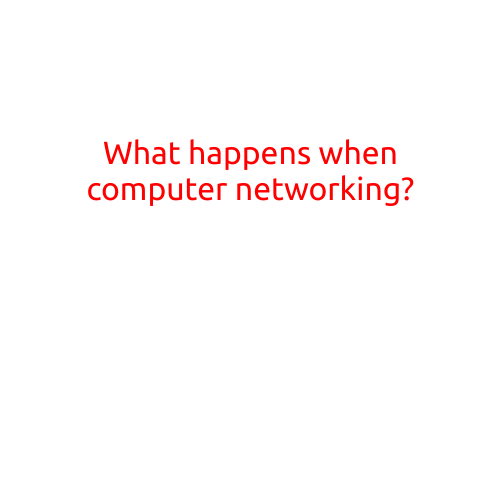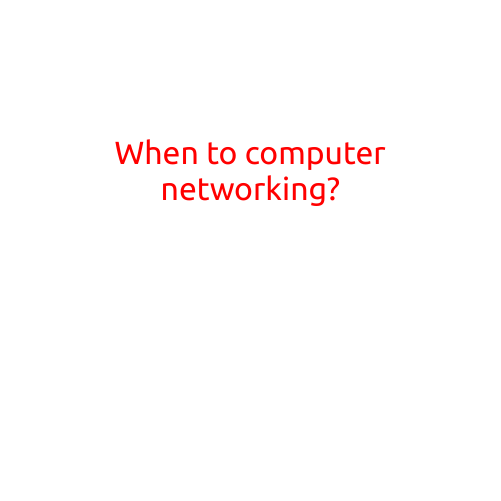
What Happens When Computer Networking?
Computer networking is the process by which devices connected to a network communicate with each other to access and share resources, exchange information, and perform specific tasks. The process of computer networking involves several steps, from the moment a request is made to access a resource on a network to the moment the request is fulfilled. In this article, we’ll take a closer look at what happens when computer networking takes place.
Step 1: Request Sent
The process begins when a device, such as a computer, smartphone, or tablet, sends a request to access a resource on a network. This request is typically sent as a packet of data, which includes the sender’s and receiver’s addresses, as well as the data being sent. The request may be initiated by a user clicking on a link, entering a URL, or sending an email.
Step 2: Routing
When the packet of data is received by the router, a device responsible for directing traffic on a network, it examines the destination address and determines the best path for the packet to reach its intended destination. This process is called routing. The router uses a routing table to determine the best path, which is typically based on factors such as network congestion, distance, and availability.
Step 3: Switching
Once the packet is routed, it is transmitted to a switch, a device that connects multiple devices within a network. The switch examines the destination address and forwards the packet to the next hop on the path to the intended destination. This process is called switching.
Step 4: Routing and Switching Repeat
The packet continues to be routed and switched from one device to another until it reaches the destination network. Each device along the path checks the destination address and forwards the packet to the next hop, repeating the process.
Step 5: Data Transfer
When the packet reaches the destination network, it is received by a router or switch. The packet is then directed to the intended destination device, such as a computer or server. The data is then transferred from the sender to the receiver, either through a direct connection or through additional routing and switching.
Step 6: Acknowledgement
Once the data has been transferred, the sender waits for an acknowledgement (ACK) from the receiver to confirm that the data was received correctly. If the data is corrupted or incomplete, the receiver may send a negative acknowledgement (NACK) to request retransmission.
Step 7: Connection Closed
Once the transmission is complete, the sender and receiver close the connection, marking the end of the network communication process.
What We’ve Learned
In this article, we’ve explored the process of computer networking, from the moment a request is sent to the moment the request is fulfilled. We’ve seen how routing and switching play a crucial role in directing traffic on a network, and how data transfer and acknowledgement work together to ensure reliable communication. By understanding the intricacies of computer networking, we can better appreciate the complexity and beauty of communication in the digital age.





